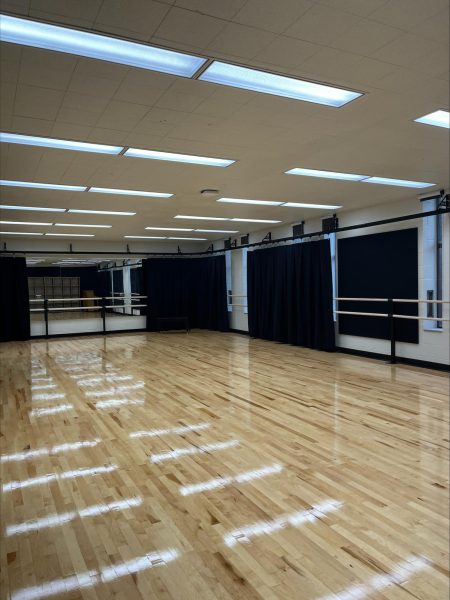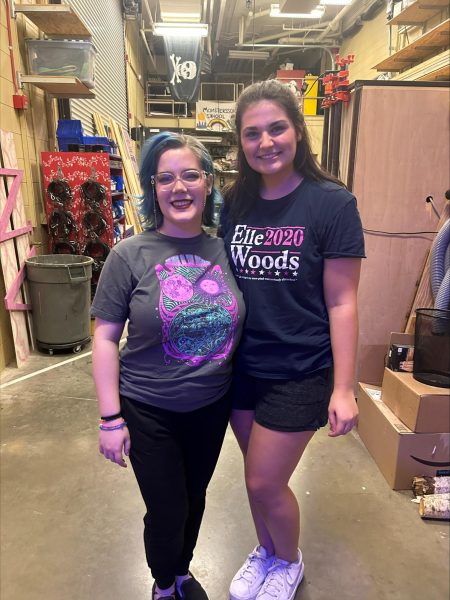Singing into the void: Viterbo’s Black Box is a black hole for acoustics
March 1, 2023
It’s not a secret in the Music and Theatre Departments that singing in Viterbo’s Black Box Theater is very different than singing in the Recital Hall. It’s like “singing into the void,” as sophomore music major Sophia Niblock puts it. As long-time music faculty Janette Hanson says, “that space is dead and very large for an acoustic voice.” However, the Recital Hall is just as large and great for sound, so what’s the difference? The scientific world of acoustics may have an answer.
Odeon is a sound software company that has published numerous articles on the science of sound. In one such article, they explain the concept of “room acoustics.” According to Odeon, “‘Room Acoustics’ is the field of acoustics that describes how sound propagates in a closed or semi-closed space. Each space has its own sound ‘fingerprint’ which affects the quality of a sound, whether this is speech, music or any kind of noise.”
The article goes on to say that room acoustics are primarily affected by the geometry of the room and the density of the walls. Odeon explains that small, cubed rooms—like the Black Box—have less angles for sound waves to bounce off of, which gives less reverberation. Longer, rectangular rooms with angled paneling—like the Recital Hall—have the opposite effect, allowing sound to carry throughout the space.
Another factor important to room acoustics is whether the walls are “hard” or “soft.” As Odeon says, “Walls have the ability to absorb part of the sound energy that hits them. This ability comes from the actual material that the wall is built from … For an ideally hard wall, no energy would be absorbed … while for an ideally soft wall, all energy would be absorbed.” Essentially, it’s the difference between screaming against a plaster wall versus screaming into a pillow—one will upset the neighbors and the other won’t even reach the roommates. The Recital Hall is lined with brick walls and slick, wood paneling, whereas the Black Box is covered wall-to-wall with heavy curtains and cushy seats. This explains the difference in sound absorption.
When building a performance space, the designer has to think about intent. Black Box theatres, characterized by their small size and flexible seating—not to mention their trademark black coloring—are intended to be “intimate” performing spaces. As the Forum Theatre website explains, “black box staging is flexible and versatile, and it allows the audience to concentrate on the actors, which can create an intimate atmosphere.” This works well for plays but results in poorer sound quality when live music is involved.
“I hate doing auditions in the Black Box because it soaks up all the sound,” says junior musical theatre major, Lindsey Meath. To students like Meath who struggle with acoustics, Hanson suggests that you “Sing the way you’re used to and try not to fill the space.” She recommends that students practice positioning themselves physically closer to listeners rather than straining their voice to permeate the void.












